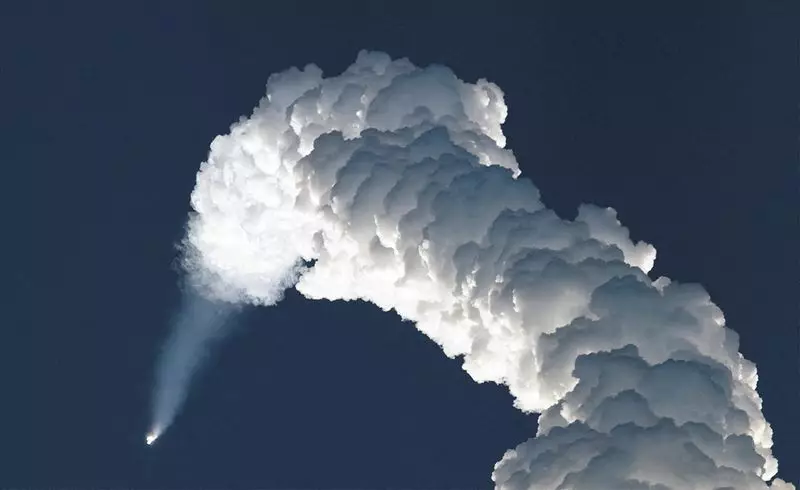As the race for dominance in low Earth orbit (LEO) intensifies, United Launch Alliance (ULA)—a strategic joint venture between aerospace giants Boeing and Lockheed Martin—is re-evaluating its approach to space launch systems. ULA’s CEO, Tory Bruno, outlined plans for an upgraded version of their Vulcan rocket specifically designed to compete with SpaceX’s Starship in the burgeoning satellite launch market, particularly for internet services like Starlink. The ambitions of ULA reflect a significant shift as the company aims to adapt to the evolving demands of the commercial space sector, largely driven by advancements in satellite technology and the pressing need for high-capacity launch vehicles.
The satellite launch sector has been dramatically altered by SpaceX’s rapid deployment of Starlink satellites. This phenomenon has spurred ULA to conduct extensive market research, culminating in a decisive pivot toward enhancing the capabilities of the Vulcan rocket. Bruno revealed that ULA’s comprehensive trade analysis revealed a crucial need for a rocket variant that could carry more mass into LEO, thus positioning ULA competitively within this lucrative market. The proposed modifications not only signify a commitment to innovation but also underline the urgency with which ULA must respond to SpaceX’s dominance in both launch capacity and satellite deployment speed.
Among the configurations under consideration for the Vulcan enhancement are variants that increase its capacity, such as the “Vulcan Heavy,” which consists of three Vulcan cores integrated to amplify lift capabilities. Bruno also hinted at unique configurations that incorporate propulsion systems in unconventional locations, aiming to optimize performance further. This adaptation tactic highlights ULA’s commitment to not just scaling but also redefining the rocket’s architecture in response to competitive pressures.
SpaceX’s Starship stands as a monumental benchmark in the space industry, particularly for missions targeting deep space exploration and high-volume satellite deployments. While designed primarily for interplanetary travel, Musk’s vision for Starship encompasses an ambitious agenda of utilitarian launches, particularly catering to the LEO satellite market. The innovative spirit behind SpaceX’s approach—illustrated by Musk’s plans to enhance the rocket’s power and rapid turnaround capabilities—raises the competitive stakes significantly for ULA and other industry players.
Bruno forecasted that ULA could finalize the development of its Vulcan variant in sync with SpaceX’s introduction of Starship into the LEO launch landscape; however, he cautioned that direct competition might still be a few years away. This timeline serves as both a caution and an opportunity, signaling that while ULA is gearing up to face SpaceX, the current landscape allows time for careful preparation and strategic development.
The spotlight is also on ULA’s ongoing endeavors with Amazon, having secured numerous launch contracts to deploy Kuiper internet satellites. This partnership not only strengthens ULA’s financial outlook but also indicates a broader strategy to create a competitive satellite network capable of rivaling Starlink. The company’s ability to launch an increasing number of missions with both the Vulcan and the Atlas V rockets is vital in cementing its role in this dynamic marketplace.
Despite the challenges ahead, ULA is committed to optimizing its offerings, with an ambitious plan targeting eight Vulcan missions and a dozen Atlas V launches in the upcoming year. The current market conditions have invigorated ULA’s resolve to maintain its relevance, particularly with Vulcan’s starting launch price of around $110 million being slightly above that of SpaceX’s Falcon 9.
Boeing and Lockheed Martin’s ULA finds itself at a crossroads as competitors like SpaceX innovate and execute at an unprecedented pace. The strategic maneuvering toward a modified Vulcan rocket illustrates ULA’s adaptation to evolving space conditions, shaped heavily by the rapid proliferation of satellite networks. This coming era in commercial spaceflight will undoubtedly test the mettle of traditional aerospace leaders against nimble competitors intent on reshaping the future of satellite launches and space exploration—pushing the boundaries of what is achievable in the realm of aerospace engineering. In this high-stakes game, ULA’s response will be critical in determining its future role and resilience in the face of competing ambitions.

